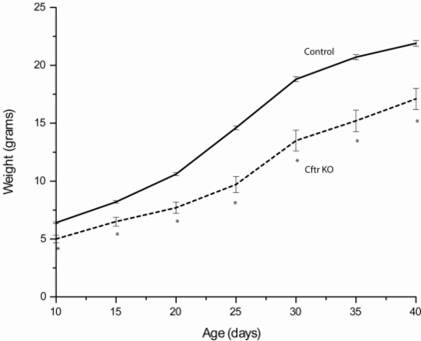General Characteristics
Lifespan: 1-2 years
Gestation time: 20 days
Litter Size: 4-8 (dependent upon background)
Age to sexual maturity: 6 weeks
Adult weight: ~15-30 grams

The Cystic Fibrosis Model
The first CF mouse model was published in 1992.1 Since 1992, more than 20 different mouse models for the study of CF have been created (see Available Mutated Strains). The CF mouse model has assisted CF researchers in studying disease manifestations ranging from intestinal obstruction and lung disease to immune function and colon cancer.

